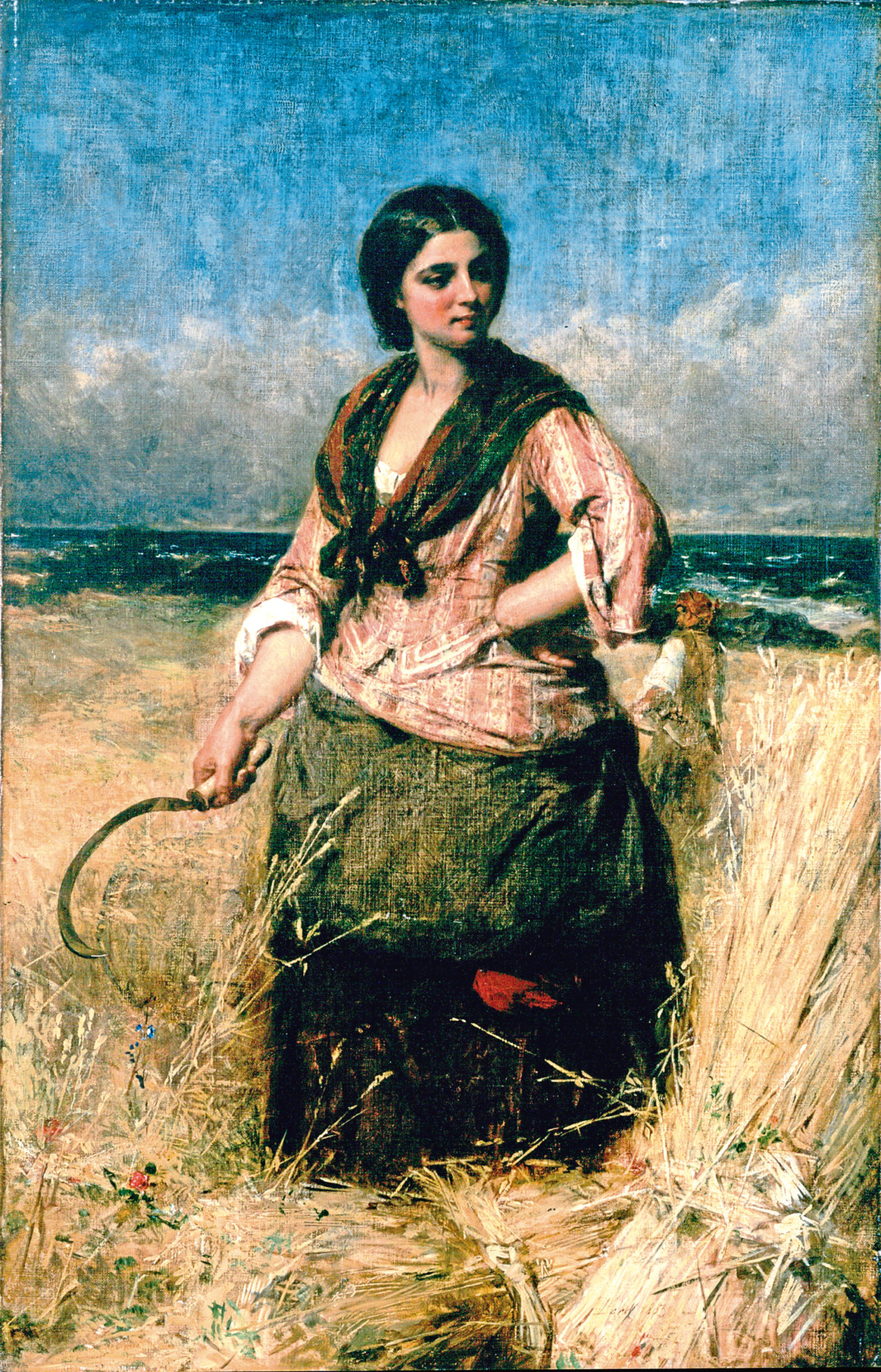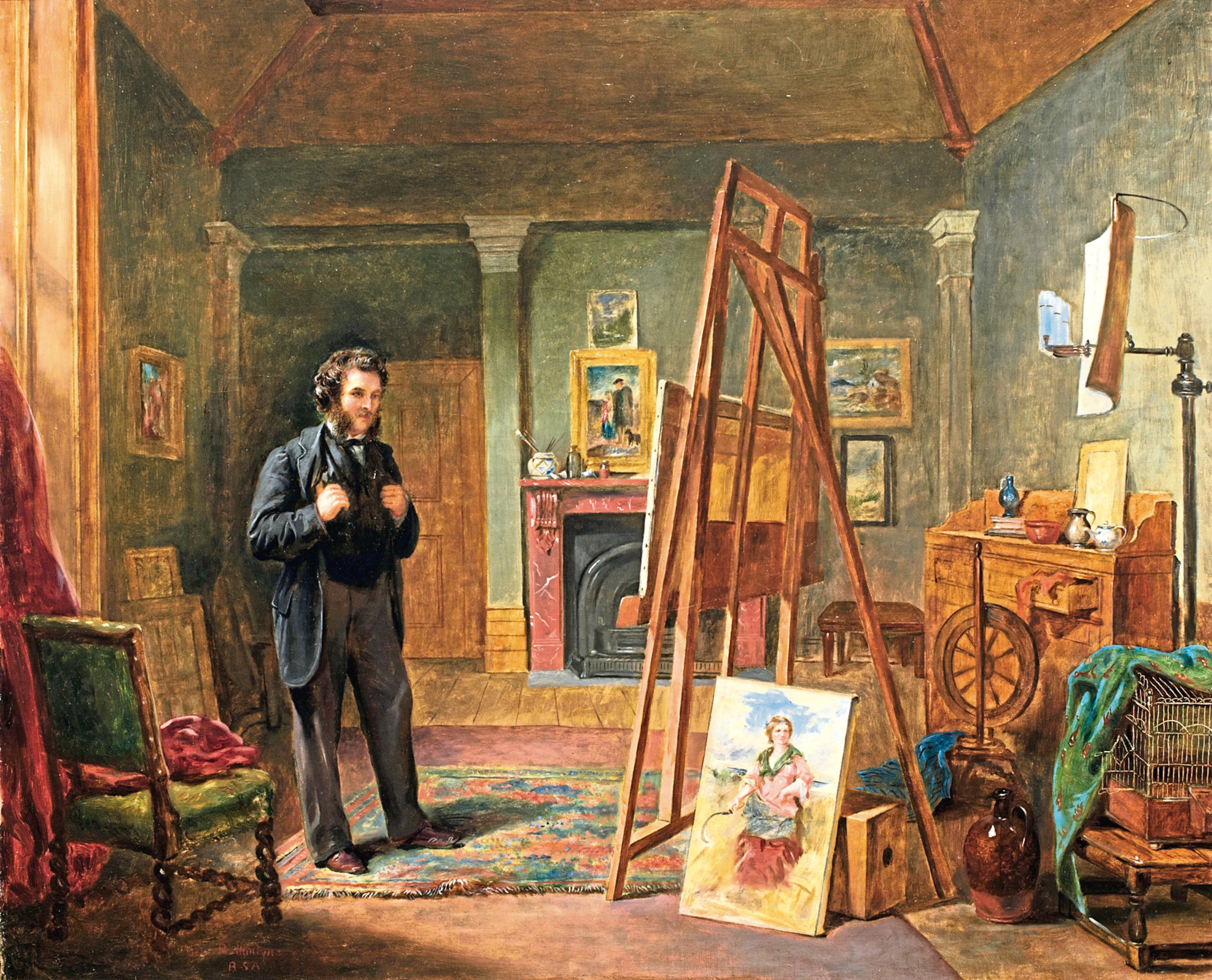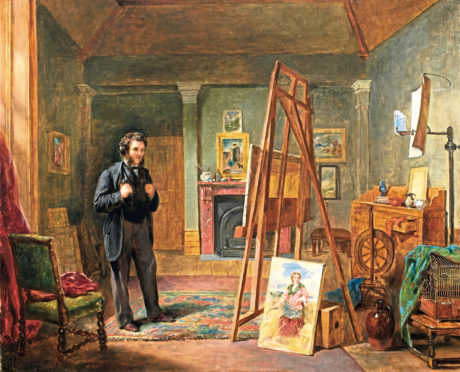Paintings and other museum objects can act as time machines, providing a direct link to the past.
If we have evidence that supports how they were created or displayed before we acquired them, it reinforces the importance of preserving and sharing these objects so that other people can make their own connections with them now and in the future.
In a previous article I looked at a portrait of Aberdonian James Cromar Watt and his collection of decorative art. In this week’s article I’ll discuss two paintings created in the early 1860s.
The first work is The Reaper, an oil painting from 1863 by Scottish artist Thomas Faed.

Here is a romanticised depiction of Scottish rural life, and although the scythe and bundles of grain have been given quite a lot of detailed attention, the female figure doesn’t seem to fully belong to her surroundings.
Don’t you think her hair and clothes seem a little bit too clean and tidy for someone who’s been working the fields all day?
In fact, Faed was based in London from 1852, so maybe he’s kind of just making things up. But how can we be sure?
Well, here’s another work from Aberdeen’s collection Thomas Faed at his Easel in his Studio by fellow Scot John Ballantyne, also dated 1863.

Note that it’s not called Thomas Faed at his Easel in a Field in Scotland. And, in fact, if you look at the bottom of the painting, you’ll notice a work that bears more than a passing resemblance to Faed’s The Reaper.
This suggests that the original was indeed painted in Faed’s studio in London, with the artist using other sources of inspiration to complete his vision.
Despite this, Ballantyne’s work still gives a fascinating insight into Faed’s creative process and the objects that he liked to surround himself with.
Items such as the spinning wheel and the bird cage in the corner make us think more about the real life of the artist, just as the depiction of James Cromar Watt’s treasured collection of objects did.
Aberdeen Art Gallery & Museums:
- Aberdeen Art Gallery (reopening autumn 2019)
- Aberdeen Maritime Museum (open 7 days, admission free)
- The Tolbooth Museum (open 7 days, admission free)
- Aberdeen Treasure Hub Museum Centre
For visiting information go to www.aagm.co.uk
Keep up to date with all the latest news from Aberdeen Art Gallery & Museums by signing up to our e-newsletter at www.aagm.co.uk/mailinglist
Follow us on Facebook, Twitter and Instagram @AbdnArtMuseums
